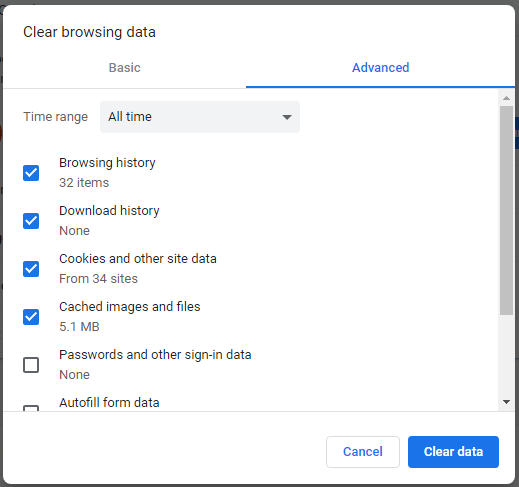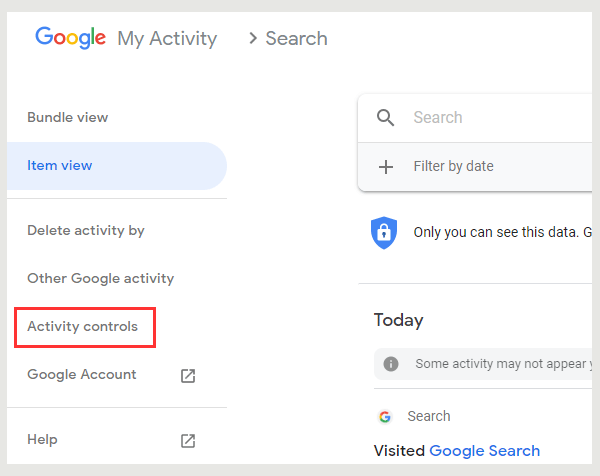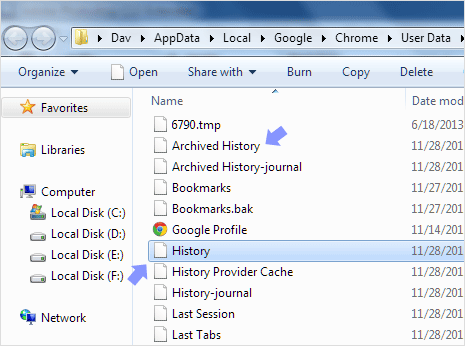

- #How to check google chrome history how to#
- #How to check google chrome history install#
- #How to check google chrome history software#
- #How to check google chrome history code#
- #How to check google chrome history download#
#How to check google chrome history software#
#How to check google chrome history install#
#How to check google chrome history how to#
How to erase browsing history in Google Chrome with data erasure software:

– with a Certificate of guaranteed data erasure and sanitization. This helps to safeguard the user privacy with efficiency.įor instance, BitRaser File Eraser (a data erasure software) features 3 data erasure algorithms to scan and destroy browser data – passwords, system/application traces etc.

Data Erasure Software: Erases the browsing history and associated data -beyond recovery -by using a data erasure algorithm, such as DoD 5220-22 M, etc.Ī File erasure software can also automate the data erasure task for confidential files that are stored in selected folders as per a scheduled task such as erase history after shut down or reboot.
#How to check google chrome history download#
Google Chrome Browser Settings: Deletes the browsing history, cached files, passwords, autofill form data, download history, and cookies along with other site data that can be recovered with a data recovery software.Ģ. You can delete Google Chrome browser history with help of the following two methods:ġ. How to Delete Browsing History in Google Chrome Therefore, to ensure privacy, it becomes necessary for you to erase not only the browsing history from your web browser but also cookies and cache files every time you close your web browser or shut down the system. The information passed by cookies can then be used by hackers to steal your hard-earned money, access your social media accounts, plan phishing attacks on you or something even worse. However, cookies also possess a significant threat to your privacy and security if you fail to manage them efficiently.īesides improving web load time, cookies can track your online activities and store your browsing history along with saved passwords, debit/credit card details, login information, download history, and much more.Īlso, there are malware and viruses on the web disguised as cookies that can potentially pass on your activity data along with other sensitive information to hackers. Websites use cookies to speed up load time and improve the user experience.
#How to check google chrome history code#
They then used the code to forge Yahoo’s cookies, which potentially allowed the hackers to access 32 million users account without a password.Ĭookies, formally known as internet cookie, web cookie, or browser cookie are tiny harmless text files stored in your web browser by the web server when you visit a website. You might have heard of Yahoo’s ‘forged cookies’ incident where hackers managed to get into Yahoo’s system and stole the proprietary code. Use a reliable data erasure tool such as BitRaser File Eraser to delete browsing history quickly. The Journeys feature is potentially a way to bring those interested people back to your website. So it all comes back to making sure that people can find you when they need you – because they may come back days or weeks later.Looking for a solid solution to permanently delete your browsing history in Google Chrome? Check out this blog to learn the best ways to erase Google Chrome browsing history with cookies, system traces, and more. A user may start out looking to book a trip but then get distracted by work or life – or doing several related searches for things they'll need for that trip – and totally forget to book the actual trip. Search can, at times, become a rabbit hole. Today, Google announced Journeys will be rolling out to Chrome in English, German, Spanish, French, Italian, Dutch, Portuguese and Turkish. Google announced Journeys as an experimental feature in October.

The history is limited by device, though Google said it may later make it possible to access Journeys on multiple devices. The Journeys feature is optional – you can turn it off if you don't want to use it. Journeys also shows Related searches beneath the grouped search history. Google said it also take into acount how often you’ve interacted with a website when it shows you results. In Google’s example, the query is “travel.” The user will then see a list Based on activity related to “travel” that is pulled from search history, including when it was searched for (in this example, 1 week ago). In the search box, you would type in a topic. Type a topic (e.g., “travel”) into your search bar and click on “Resume your research”. Working off of Google's “travel" example, there are two ways to use Journeys in Chrome:


 0 kommentar(er)
0 kommentar(er)
